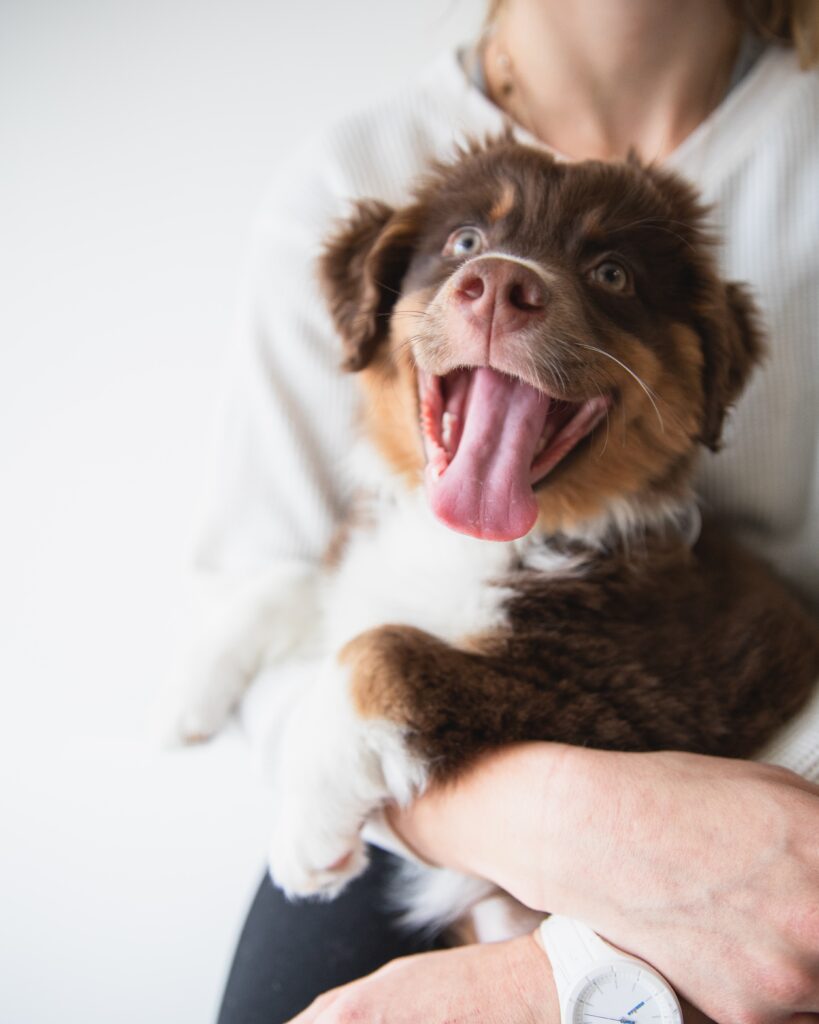April 4, 2023

The answer is a resounding yes!
I am not talking about having long discussions with your dog about how your boss’s rude behavior or your plans for your upcoming vacation.
I’m talking about “happy talk.” Renowned dog trainer, William E. Campbell coined the term, the Jolly Routine. It entails using happy, sing-song tones with your dog while praising them (you can say anything really! Since they are responding to your tone not your words!) Another name for the Jolly Routine is happy talk.
Why does happy talk work?
Happy talk is inherently rewarding and enjoyable to dogs as they enjoy to happy upbeat tones. Call your dog over and in an upbeat happy voice, try saying “you’re such a good dog! Who’s the best dog? It’s you! You’re the best!!” And watch your dog’s body language.
Does he lean in for pets? Or does he look at you like you’re his favorite person?

That is happy talk and it is part of the Jolly Routine. The Jolly Routine proposes that since dogs love happy talk, if we pair it with something they are fearful of, we can start to help them associate that scary with something good rather than fear.
Think about going to the doctor as a child, or taking your own child to the doctor. Most pediatricians give out some sort of prize, sometimes candy but now more commonly stickers or some other small fun toy.

They are pairing something scary (going to the doctor) with something inherently fun (candy/toys). And the same is true for happy talk.
The next time your dog is fearful of something, don’t drag him towards it. If he wants to observe the scary thing, let him, and start happy talking. Then go on your way. If we overexpose our dogs to the things they are fearful of, we always risk making their fear worse.
I know it can seem silly and embarrassing to happy talk! Try practicing it at home or in your own yard. Then move on to practicing it a few times for each walk you go on when no one is around. Eventually, you will feel more comfortable practicing in front of strangers.

But won’t that just reward their fear?
Contrary to pop culture beliefs about dog training, it is IMPOSSIBLE to reward fear.
Let’s think about an example. Let’s say you and your partner are in a bank and it is robbed. You start to cry and your partner tells you “everything will be ok, it will be over soon, I’m here, I love you.” You feel comforted and calmed by their words and soon, this scary event ends and you get out safe and sound.
If you were comforted, would you be more fearful? Are you likely to be more afraid the next time something scary happens? No, of course not.
Untrained dog trainers have pushed the concept that fear can be rewarded. The dog training industry is unfortunately completely unregulated. As a result, literally anyone can wake up one morning and call themselves a dog trainer. When taking training advice from any dog trainer, ensure they are credentialed and certified and force-free as the American Association of Veterinary Behaviorists warns against the use of force and punishment in dog training.
Important note about fear in young dogs
If you’re worried your dog’s fear are serious and it is impacting his (and your) every day life, reach out to schedule training. When dogs are fearful of things at a young age, those fears can worsen as the dog reaches social maturity.
What was once a cute puppy nervous around new people can become a large adult dog who lunges and barks, and possibly tries to bite new people. Puppies rarely “get over” their fears as we so often hope they will. Help is available and I am here for you every step of the way.
Leave a Reply Cancel reply
Frustrated with reactive outbursts on walks?
Wondering if you will ever enjoy a "normal" walk with your dog?
you need this free guide!
follow along on instagram @modernmannersdogtraining
privacy policy
design by little hound creative
